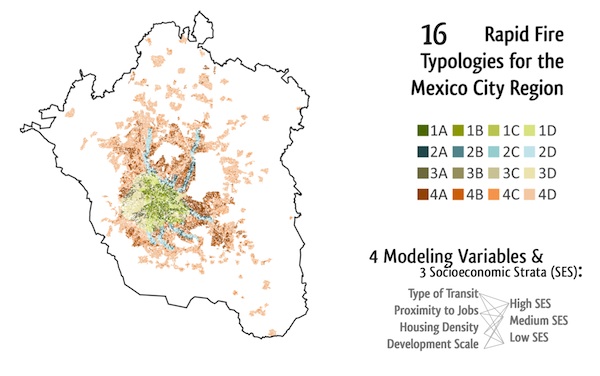Urban Growth Scenarios: RapidFire in Mexico City
Sofia Viguri (MUP ’15)
As Mexico City’s population of over 20 million continues to grow, there is a need to find methods to better understand, estimate, and communicate the implications that alternative land use and transportation decisions have for the future performance of the city.
During the summer, Sofía Viguri (MUP 2015) collaborated with Calthorpe Associates in a project seeking to customize and deploy the RapidFire model for its use in the Mexico City Metropolitan Area. This analytical framework tests different ways of allocating population and economic growth within cities and regions. Its structure establishes relationships between urban form, building types, and transit infrastructure on the one hand, and land consumption, transportation patterns, and fiscal expenditures on the other.
This model establishes metrics that allow decision-makers and the public to compare different types of urban development in terms of their energy and water use, pollutant emissions, public and household expenditures, and health impacts. RapidFire has been successfully used in California to inform the design of various policy initiatives, such as the implementation of AB32, by accounting for the role of land use planning in mitigating CO2 emissions.

Working with Centro Mario Molina, the first phase of this project modified the original US-based modeling framework in order to respond to variables that are critical to understanding Mexico City’s urban dynamics: the geospatial distribution of socioeconomic strata, the role of informal transit networks, and the value-of-time implications of transportation choice, among others. Various meetings with experts and stakeholder groups in both Mexico and California informed this process.
Additional work involved geospatial and statistical data gathering and categorization; the construction and characterization of sixteen urbanization typologies; and the calibration of TRANUS, a transit model by the Institute for Transportation and Development Policy (ITDP), which will feed into the modeling framework.
The project continues as a joint effort between Calthorpe Associates and Centro Mario Molina in Mexico City, with funding from the Mexican National Council for Science and Technology (CONACYT).